Shahrestan Bridge in Isfahan: Iran’s Oldest Historical Bridge
The Shahrestan Bridge in Isfahan, Iran, is one of the oldest bridges in Iran.
The Shahrestan Bridge was built during the Sasanian era, a long time ago. It has seen a lot of history. People have used it to cross the river for many years. It shows how clever the people who built it were. The bridge is made of strong stone pillars and beautiful arches. It was designed to work well with the river, even when the water level changed. The bridge has been fixed up a few times over the years, especially during the Islamic period.
The Shahrestan Bridge is still a popular place for people to visit. It’s beautiful to look at and important to understanding Isfahan’s history. The city is known for keeping old art and architecture from different times.
History of Shahrestan Bridge
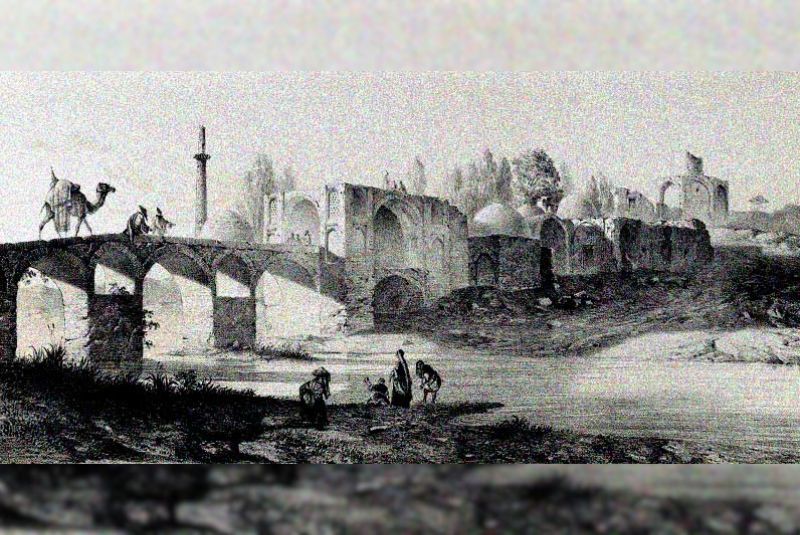
The origins of Shahrestan Bridge can be traced back to the Sasanian era, which ruled Persia from 224 to 651 AD. Built as a vital crossing over the Zayandeh River, this bridge played an essential role in connecting Isfahan with other key regions, facilitating the movement of people, goods, and armies. As one of the earliest examples of bridge engineering in Iran, it reflects the sophisticated construction techniques of the Sasanians, who were known for their innovations in architecture and civil engineering.
The bridge's original structure was made from stone and brick, chosen for their durability. It features a series of semi-circular arches supported by robust stone pillars. These materials were selected to withstand the strong current of the Zayandeh River and seasonal floods, ensuring the bridge remained functional for centuries. During the Islamic period, especially under the Seljuks and later dynasties, the bridge was repaired and expanded. These reconstruction efforts incorporated Islamic architectural styles, blending the ancient Sasanian design with new artistic elements, such as decorative brickwork and additional arches.
Cultural and Historical Significance
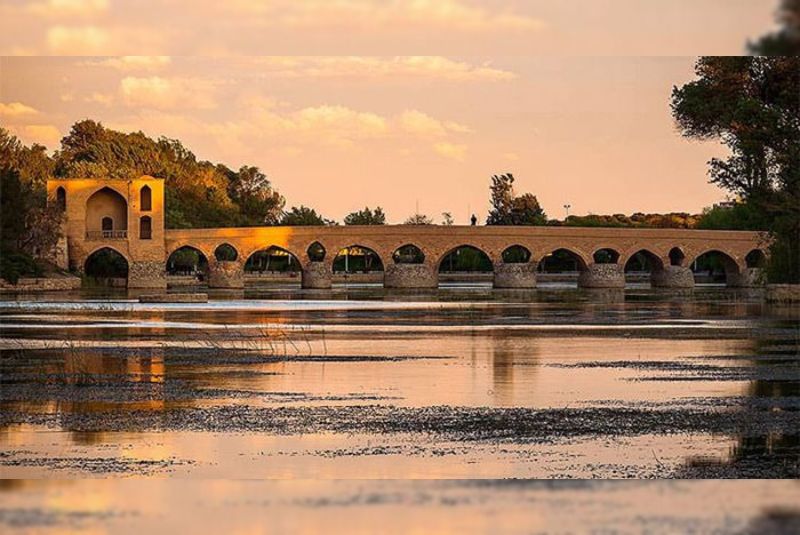
Shahrestan Bridge was not only a crucial piece of infrastructure but also a strategic asset for the rulers of Isfahan. It connected Isfahan to the eastern regions, making it a critical point for trade and communication. Over time, it became a symbol of the city’s importance in the economic and political landscape of Persia.
The bridge also reflects the ingenuity of Persian engineering in dealing with natural challenges, such as managing river flow and controlling flooding. The design allowed water to pass through the arches without damaging the structure, ensuring its longevity. Even today, Shahrestan Bridge continues to stand as a testament to the skills of its builders.
Preservation Efforts
Shahrestan Bridge has undergone several preservation efforts over the centuries to maintain its structural integrity and historical significance. While parts of the original Sasanian construction remain, many elements have been restored or replaced to protect the bridge from damage caused by time and natural forces. Despite these restorations, much of the original design can still be observed, allowing visitors to appreciate its ancient roots.
Local and national preservation initiatives have ensured that Shahrestan Bridge remains accessible to the public, allowing tourists and historians alike to explore one of the oldest surviving ancient Iranian bridges. Its continued presence on the landscape of Isfahan speaks to the dedication to preserving Iran's architectural legacy.
Architecture and Design of Shahrestan Bridge
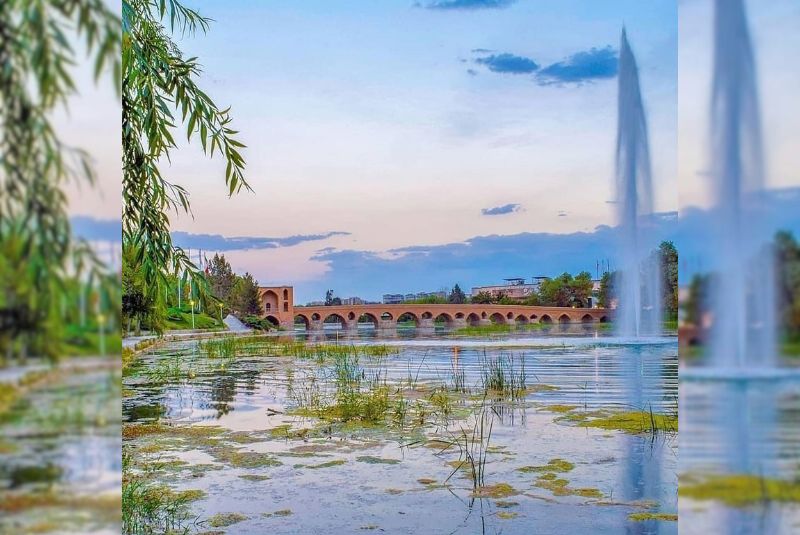
Shahrestan Bridge is composed of a series of semi-circular arches supported by stone pillars, a design that reflects the practical needs of ancient engineering while also adding to its visual appeal. The bridge's layout was intentionally crafted to allow the Zayandeh River to flow through its arches, minimizing the risk of flooding and damage. The bridge features two distinct layers: the lower section, which is primarily functional, and the upper level, designed for pedestrians and livestock crossing the river. Its modest size and structure serve practical purposes, yet the harmonious repetition of arches creates a balanced and aesthetically pleasing form.
Materials and Techniques
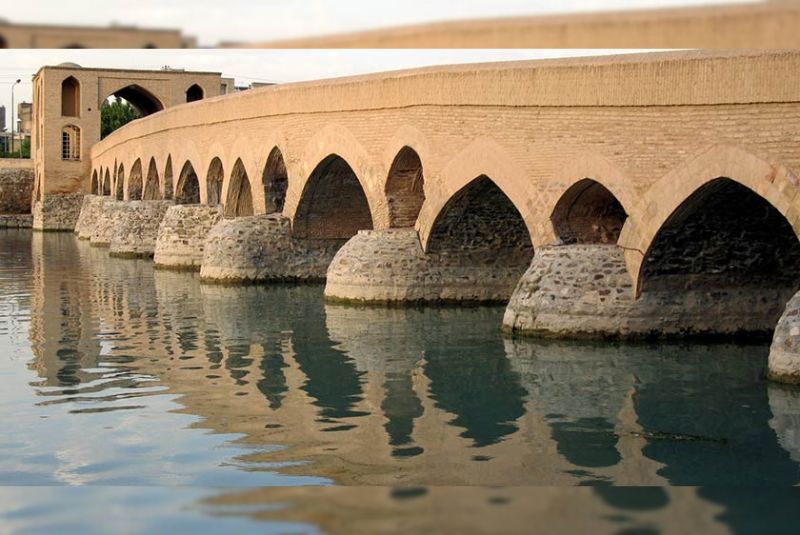
The bridge was built primarily from stone and brick, both of which were carefully selected for their strength and resilience. Stone pillars provide the core support, ensuring the structure remains stable against the force of the river, particularly during the rainy season. Brickwork, on the other hand, was used for the arches and surface layers, contributing to the overall durability of the bridge. The combination of these materials allowed for efficient water management, as the gaps between the arches enable the river to pass through without putting excessive pressure on the structure.
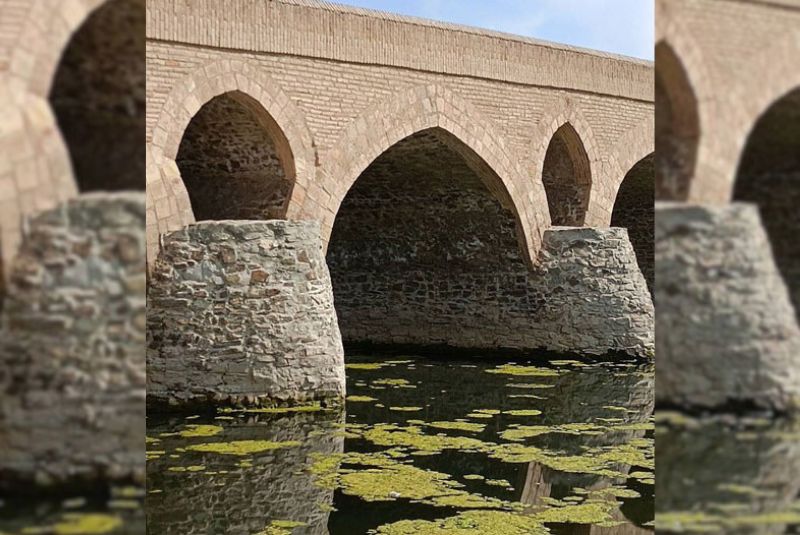
To further ensure longevity, Persian engineers employed techniques such as deep foundations and reinforced pillars, designed to prevent erosion and wear from the constant flow of water. This attention to engineering has kept Shahrestan Bridge intact for centuries, even in the face of natural challenges.
Comparison with Other Bridges
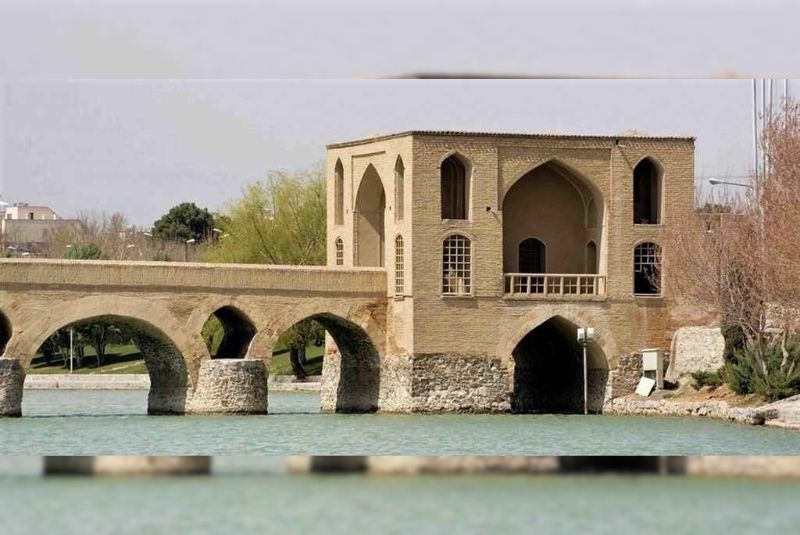
In comparison to other Isfahan bridges like Si-o-se-pol and Khaju Bridge, Shahrestan Bridge stands out for its age and simplicity. While Si-o-se-pol is grander with its 33 arches and Khaju Bridge showcases elaborate Safavid-era decorative features, Shahrestan is more functional and straightforward. It reflects an earlier period of Persian engineering focused on durability rather than embellishment, making it unique among the city's historical landmarks.
Visiting Shahrestan Bridge: What to Expect
Shahrestan Bridge is situated on the Zayandeh River on the eastern edge of Isfahan, making it slightly removed from the city's central tourist areas. However, it is easily reachable by car or taxi from the city center. Visitors can also take public transportation to nearby stops, followed by a short walk to the bridge. It’s located near residential areas, offering a quieter, more relaxed atmosphere than the busier central sites. The best time to visit the bridge is during the early morning or late evening when the light enhances its arches and the surroundings are less crowded.
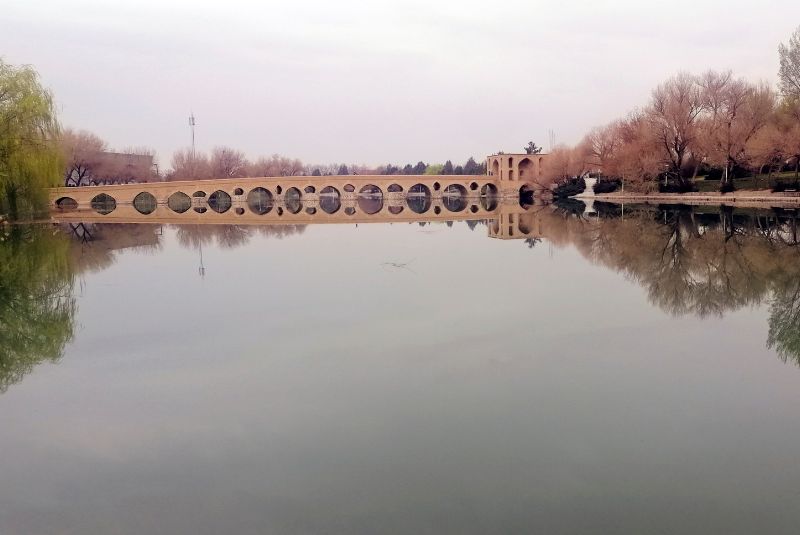
What to See
Upon visiting Shahrestan Bridge, visitors will notice its distinctive semi-circular arches, which vary in size across the length of the structure. The stone pillars that support these arches are a highlight of ancient Persian engineering, still standing strong despite centuries of exposure to the elements. The brick patterns on the upper sections of the bridge are another notable feature, providing insight into the craftsmanship of the period. In addition, parts of the bridge that have been restored blend seamlessly with the original construction, maintaining the bridge’s historical authenticity.
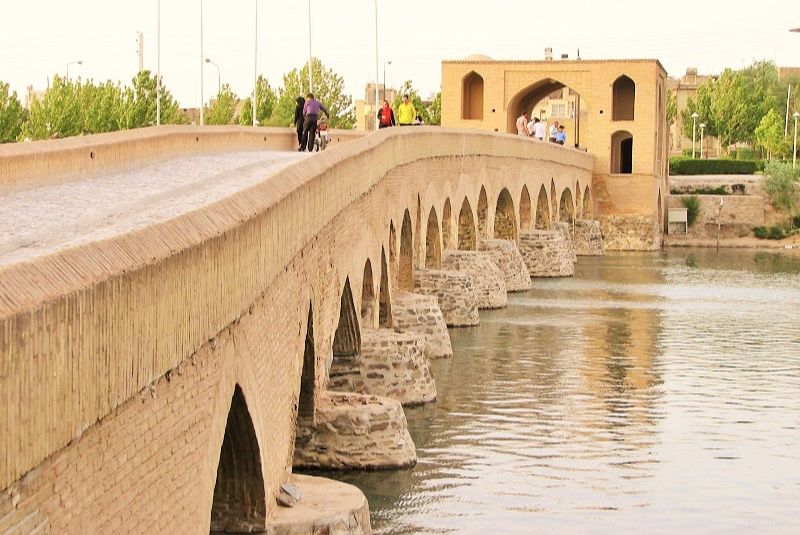
Historical markers near the bridge provide context and additional information, giving visitors a chance to learn more about its construction and significance. Walking along the bridge allows for a close-up view of the design, while the banks of the Zayandeh River offer an excellent vantage point for photographs.
Best Time to Visit Shahrestan Bridge
To fully appreciate the beauty and tranquility of Shahrestan Bridge, it is recommended to visit during early morning hours or just before sunset. These times provide the most favorable lighting for photography, highlighting the textures of the stone and brick. Furthermore, visiting during these hours allows you to avoid larger crowds and enjoy a more peaceful experience by the river. The seasonal changes in the river flow also offer a different perspective on the bridge throughout the year, making every visit unique.
Shahrestan Bridge Nearby Attractions
Isfahan is a city brimming with architectural wonders, each offering visitors a unique experience of Iran’s rich cultural and artistic legacy. While Shahrestan Bridge is an impressive historic site on its own, Isfahan is also home to several other landmarks that should not be missed. Here are some of the key attractions near Shahrestan Bridge:
Si-o-se-pol (33 Arch Bridge)
One of Isfahan’s most iconic bridges, Si-o-se-pol is celebrated for its elegant design featuring 33 arches that stretch across the Zayandeh River. Built during the Safavid era, the bridge is a masterpiece of Persian engineering, symbolizing the architectural prowess of the time. Its arches reflect beautifully on the river’s surface, particularly at night when the bridge is lit up, creating a magical atmosphere. Si-o-se-pol is a popular spot for evening strolls, photography, and social gatherings, with many locals and tourists coming to enjoy the ambiance by the river.
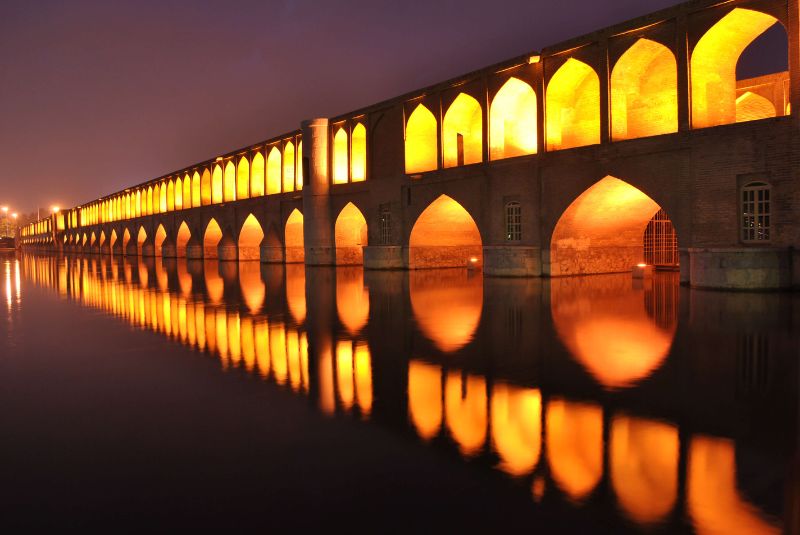
Khaju Bridge
Another remarkable bridge in Isfahan, Khaju Bridge stands out with its two-story design and dual function as both a bridge and a dam. This 17th-century structure also features intricate tilework and a series of arched walkways that visitors can explore. The lower level, often bustling with people, is where locals sit by the river and enjoy the cool breeze, while the upper level offers panoramic views of the river and the city. Khaju Bridge is particularly lively in the evenings when the riverbanks are full of people, and musicians often perform in the alcoves, creating a vibrant atmosphere.
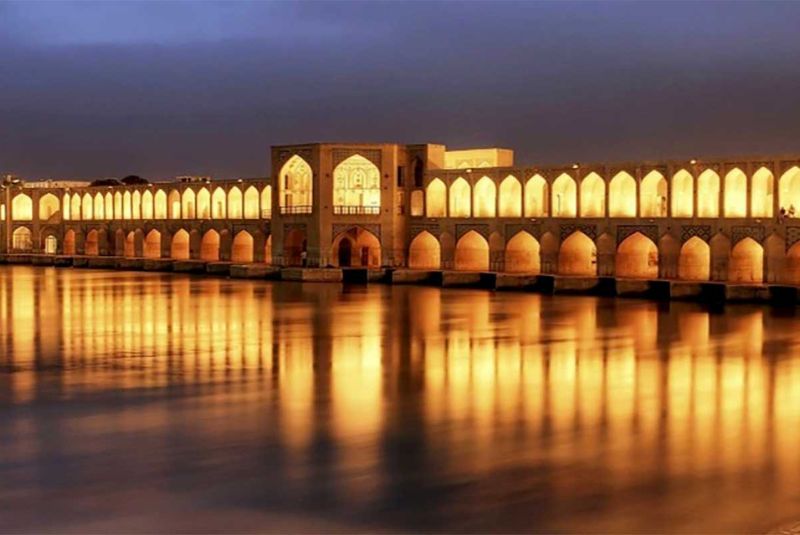
Naqsh-e Jahan Square (Imam Square)
Naqsh-e Jahan Square, also known as Imam Square, is one of the largest and most impressive public squares in the world. Surrounded by monumental buildings, the square is home to architectural gems like the Shah Mosque, the Ali Qapu Palace, and the Sheikh Lotfollah Mosque, all showcasing Persian-Islamic art and architecture at its finest. The square is a hub of activity, with lively bazaars, cafés, and vendors selling traditional handicrafts. A UNESCO World Heritage site, Naqsh-e Jahan Square is a must-see for anyone visiting Isfahan.

Chehel Sotoun Palace
Set within a peaceful garden, Chehel Sotoun Palace is known for its beautiful architecture and serene surroundings. The name "Chehel Sotoun" means "Palace of Forty Columns," a reference to the twenty slender wooden columns that support the front of the pavilion, which, when reflected in the water of the front pool, create the illusion of forty columns. Inside, visitors can marvel at exquisite murals depicting historical scenes from Persian history. The palace’s tranquil gardens offer a quiet retreat from the city’s busier attractions, making it an ideal spot for reflection and relaxation.
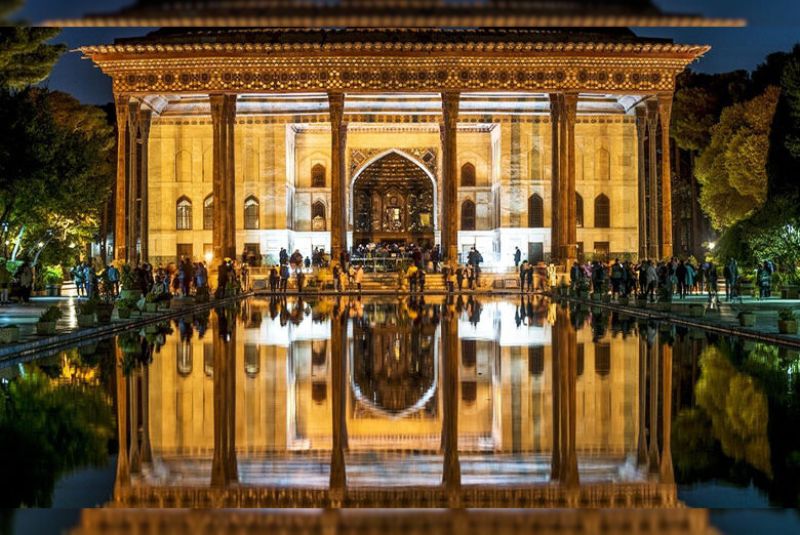
Vank Cathedral
Located in the Armenian quarter, Vank Cathedral is a unique blend of Persian and Christian architectural styles. The cathedral was built in the 17th century and is renowned for its richly decorated interior, featuring elaborate frescoes, gilded carvings, and intricate tilework. The combination of European and Iranian art forms gives the cathedral a distinct appearance, making it a significant cultural and historical site in Isfahan. Visitors to Vank Cathedral can also explore its museum, which houses artifacts from the Armenian community’s history in Iran.
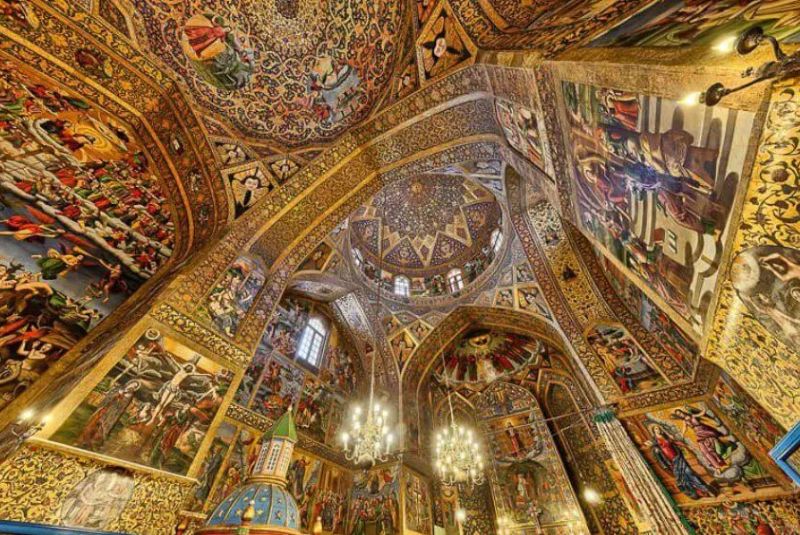
Zayandeh River Walks
For those seeking a more relaxed experience, a walk along the Zayandeh River offers scenic views of Isfahan’s famous bridges and the tranquil flow of the river itself. The riverside paths are lined with trees and benches, providing a peaceful environment where visitors can take a leisurely stroll, enjoy a picnic, or simply unwind. The walkways are particularly enjoyable during early morning or evening hours when the weather is cooler, and the view of the bridges, such as Si-o-se-pol and Khaju, is especially striking.
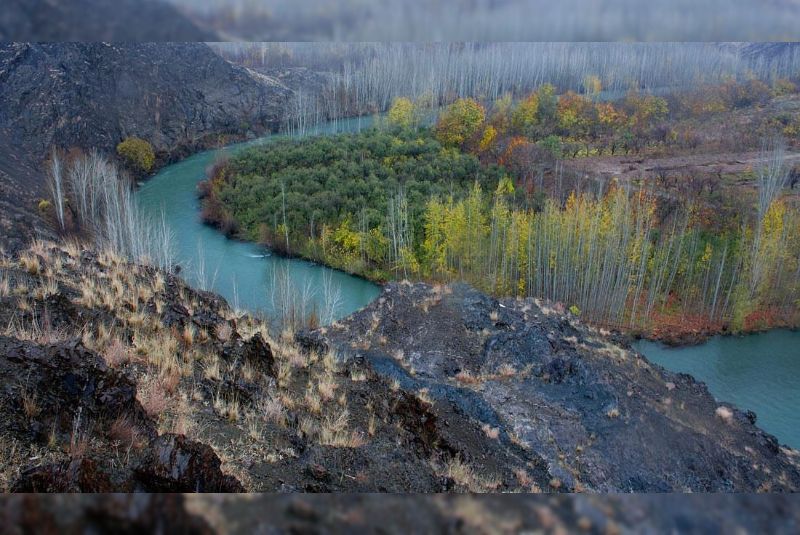
How to Get to Shahrestan Bridge
Shahrestan Bridge is located on the eastern edge of Isfahan, and visitors can reach it easily by car, taxi, or public transport. For those traveling to Isfahan, the city's bus network and taxis are reliable options. If you prefer to drive, car hire services are available, and there is parking nearby, though spaces can be limited during peak hours. Public buses stop near the bridge, and a short walk will take you to the site.
Entry Fees and Opening Hours
Shahrestan Bridge is a public space and is free to visit at any time. There are no entry fees or restricted hours, allowing tourists to explore the bridge at their own pace, whether during the day or for an evening visit.
Tips for Shahrestan Bridge Visitors
When visiting Shahrestan Bridge, comfortable footwear is recommended, especially if you plan to walk along the riverbanks or explore nearby areas. Photography enthusiasts will find the best spots along the Zayandeh River, where the bridge’s arches create beautiful reflections. There are several cafés and restaurants in the vicinity, providing refreshments and a place to relax after your visit.
Final Takeaway
If you’re visiting Isfahan, the Shahrestan Bridge is a great place to go. It’s both a historical site and a peaceful place to enjoy the river. It’s close to other famous places like Si-o-se-pol, Khaju Bridge, and Naqsh-e Jahan Square. So, it’s easy to visit along with other things. If you like history or beautiful buildings, the Shahrestan Bridge is a must-see in Isfahan.
Share your story!
Comment below and let us know about your Experience.
Your story inspires others!


Comment
Leave a Comment